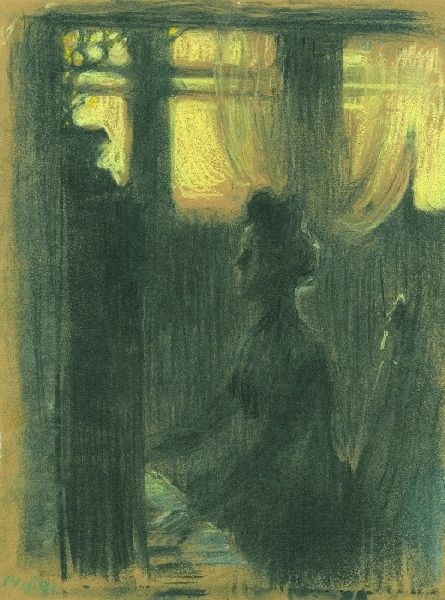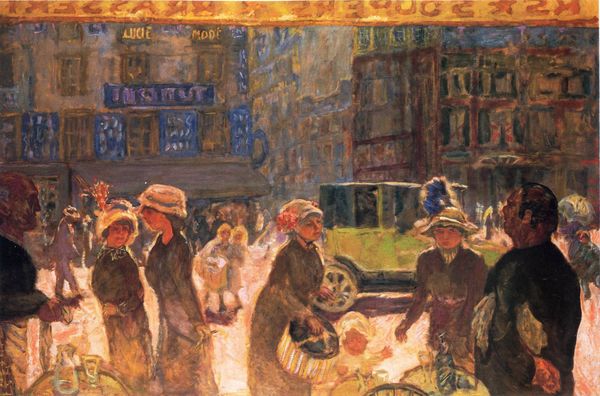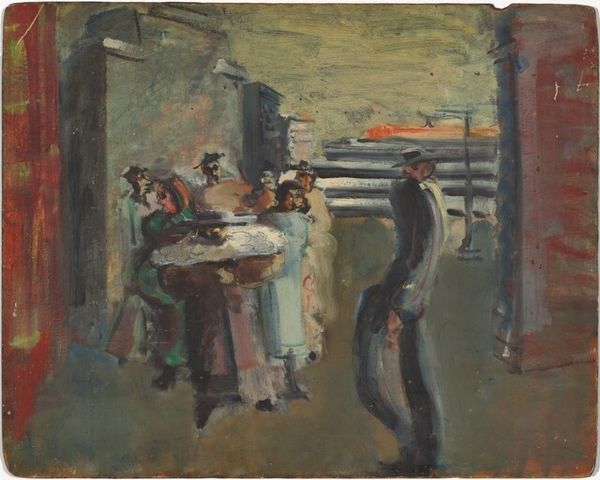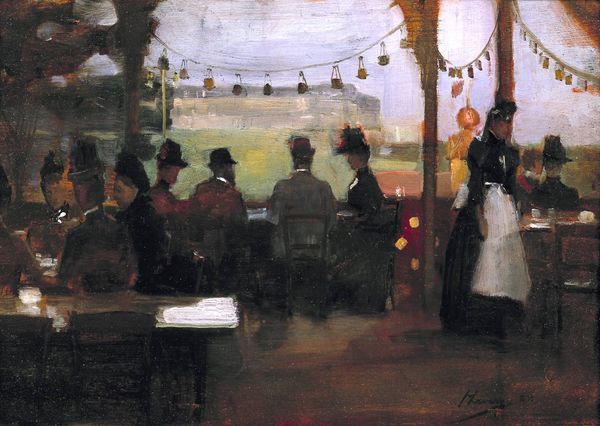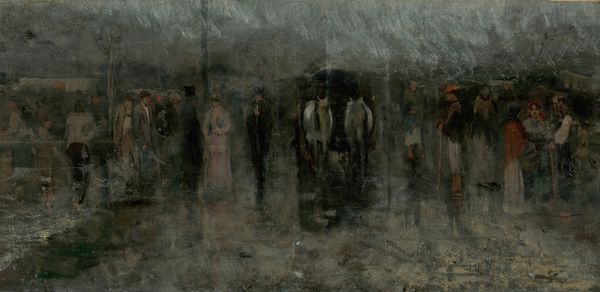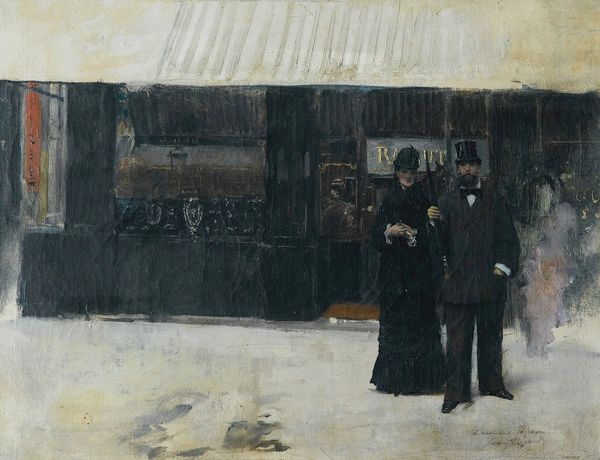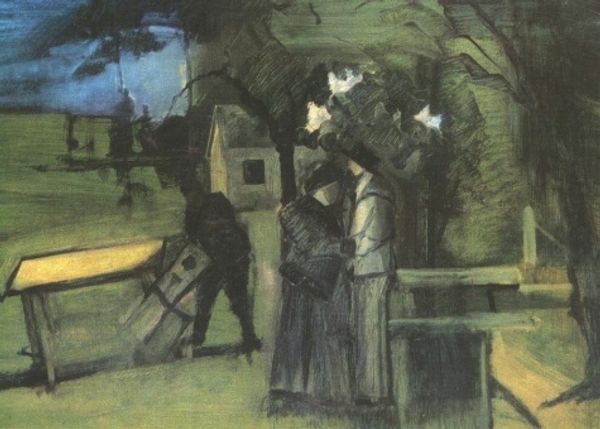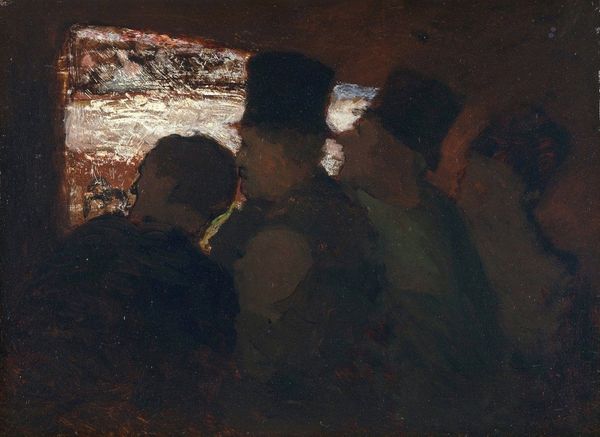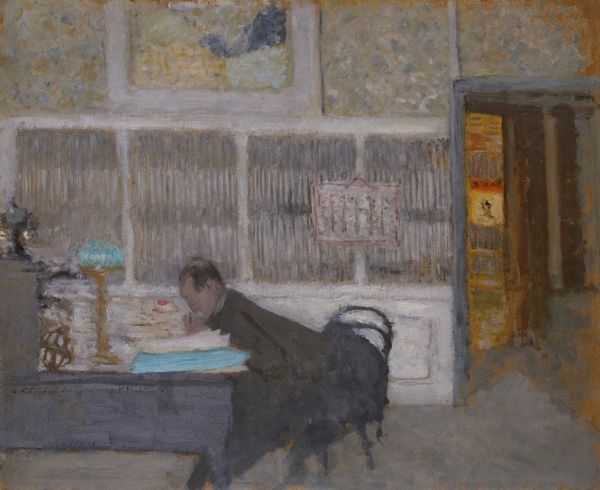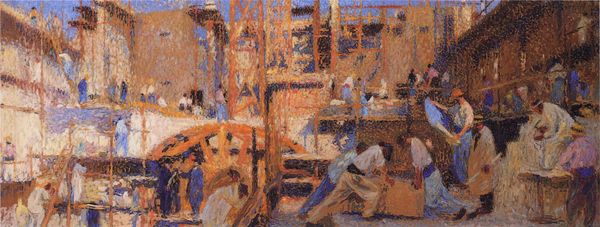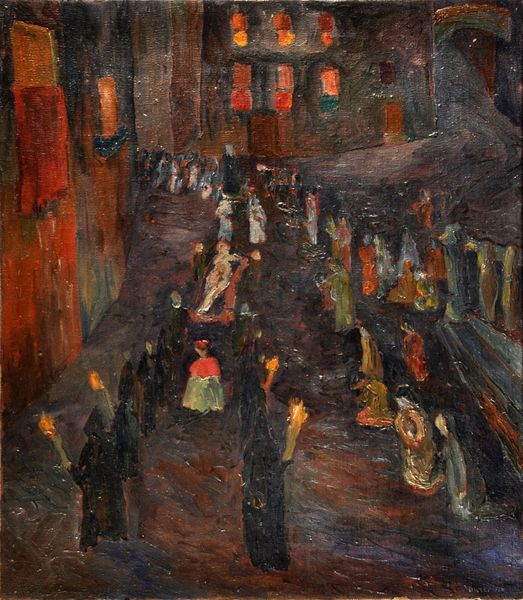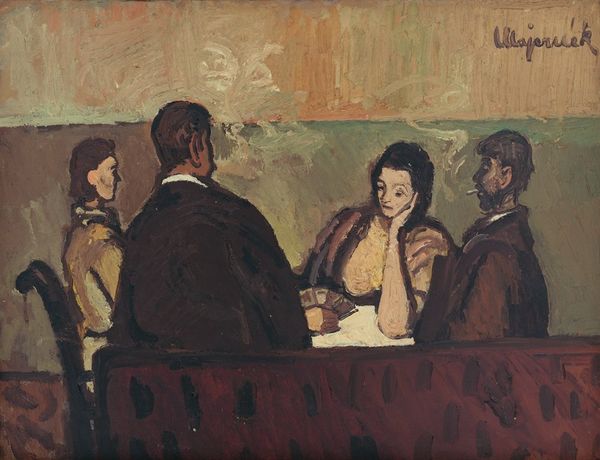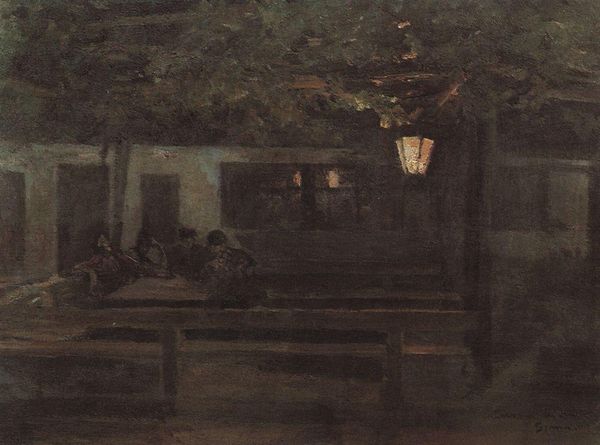
Dimensions: support: 337 x 394 mm frame: 440 x 496 x 72 mm
Copyright: © Tate | CC-BY-NC-ND 4.0 DEED, Photo: Tate
Editor: This is Stanislawa de Karlowska's "Fried Fish Shop," housed here at the Tate. There's a subdued, almost melancholic mood to it, and I'm curious about that window dividing the interior from the exterior. How do you interpret this work? Curator: It's a poignant depiction of class and gender in early 20th-century London. Notice how the window acts as a barrier, separating the viewer, perhaps a more privileged observer, from the working-class figures inside. What does the woman outside looking in suggest to you? Editor: Maybe a sense of longing or exclusion, a quiet observation of a world she may or may not fully participate in? Curator: Precisely. Karlowska subtly critiques social stratification, inviting us to consider the lived experiences of those often marginalized or unseen. It makes you think about who has access and who is excluded from society, even from something as simple as a fried fish shop. Editor: I see that now. It's a lot more complex than I initially thought. Thanks for pointing that out!
Comments
tate 6 months ago
⋮
http://www.tate.org.uk/art/artworks/de-karlowska-fried-fish-shop-n06238
Join the conversation
Join millions of artists and users on Artera today and experience the ultimate creative platform.
tate 6 months ago
⋮
Fried fish and chips shops were found in large numbers in London at this time. The food became a staple of a working-class diet. De Karlowska focuses on the figures queuing up to be served. There is a strong sense of London life glimpsed in passing. She also captures the fall of yellow gaslight, penetrating the gloom of the street. When the picture was first exhibited, a reviewer commented, ‘Restful indeed are the quiet subtle harmonies of blue and yellow, while the soft steamy oily atmosphere lifts the common ‘Fried Fish Shop’ into the realm of poetry.’ Gallery label, October 2020

